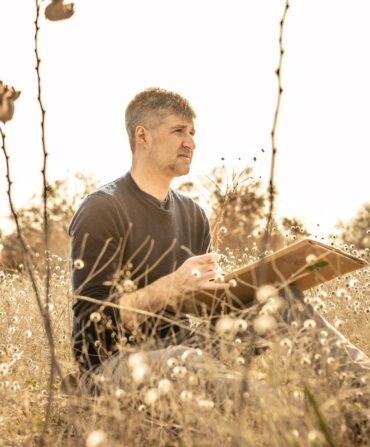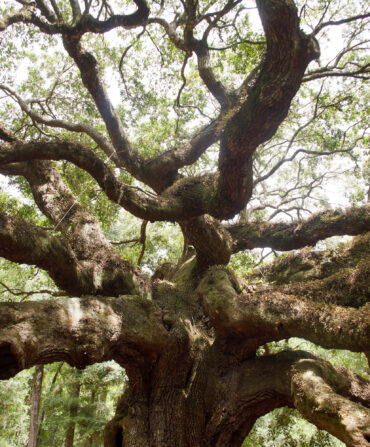Land & Conservation
Conservation’s New Frontier in South Texas
The East Foundation is on the cutting edge of studying how working landscapes can work for people, cattle, quail, and wildlife of all stripes
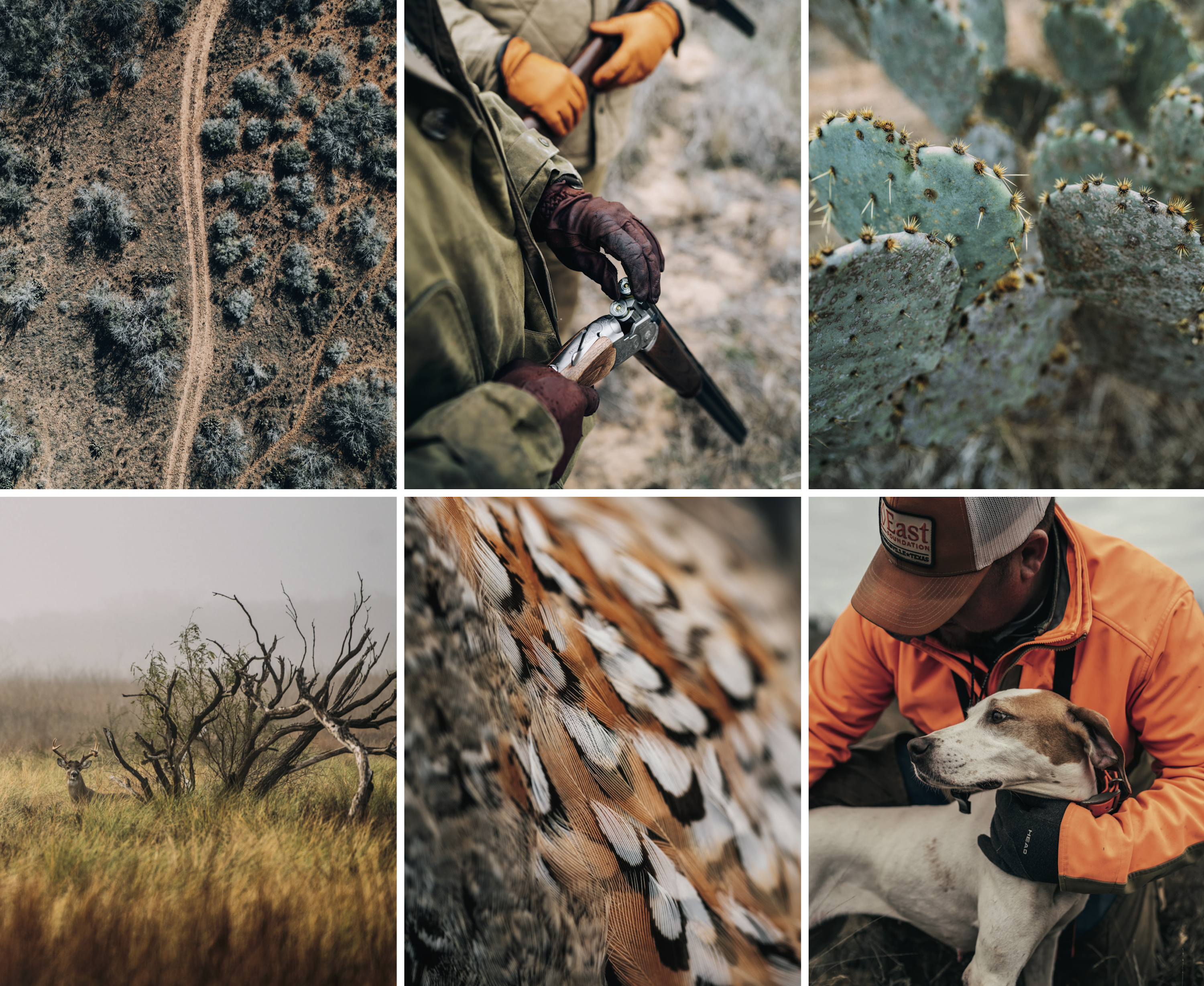
Photo: NICK KELLEY
Clockwise from top left: Game and cattle trails at San Antonio Viejo Ranch; quail hunters in the scrub; prickly pear cactus; wildlife scientist Abe Woodard with Lexi; bobwhite plumage; a white-tailed deer at El Sauz Ranch.
It’s called Tamaulipan thornscrub, this sheet of mesquite grove and wiry, briary, thorny chaparral brush. It covers much of the landscape from northeastern Mexico into the Gulf Coastal Plain of South Texas, a fifty-five-thousand-square-mile region of mostly thick cover, grading here and there into grasslands spiked with cacti. There’s just enough open ground that you can fool yourself into thinking you can make your way across and remain unspiked, unspined, and unthorned. Which might be possible if you were looking where you were going. But it’s much more difficult when you’re following a bird dog with a snout full of quail scent, which is the task at hand.
Bobwhite quail love the thornscrub, as do white-tailed deer, javelinas, non-native nilgai antelope (an Indian species introduced on the King Ranch in the 1930s and now freely roaming vast sweeps of South Texas), endangered ocelots, Texas tortoises, wild turkeys, and more than five hundred other species of birds. South Texas thornscrub is, in fact, a year-round cornucopia of plenty for wildlife, and especially for quail. They eat the fruits of Texas hog plum, Texas persimmon, Mexican olive, spiny hackberry, desert yaupon, and lime prickly ash. In the summer and early fall, quail will gorge on so many prickly pear fruits that their faces are sometimes dyed a vibrant purple.
Now Chief, an English pointer, has frozen in a copse of palmate cacti, on the edge of a brushy mesquite thicket. I’m almost to the point when the covey flushes, quail wings clattering in the low scrub and then in the mesquite limbs as the birds break for open air. My first shot shears off finger-thick limbs and branches, the wood chips raining down with a falling bird. With the shotgun’s report, the stragglers decide they’ve had enough, and a few more quail—or it could be four or five—vault from the cover. The nearest bird flies overhead as the gun arcs to my shoulder, and I almost fall backward with the shot.
I break the shotgun open and look around. In the low-leaning light of a late winter afternoon, the thornscrub seems to soften, the jagged vegetation sanded down and smoothed like meringue. There’s a jangle of metal growing closer, and the huffing of a dog, and then a bird is delivered to my feet.
Those two quail will go into my bird vest, and then into a cooler, but they are also a harvest of a different sort. Researchers will log the location of each kill into a vast data set, as well as the precise coordinates of the covey flush, the position of the dog, how far the dog ran today and its exact route, how many hunters were in the party, how many shots were fired, how many quail were shot and retrieved, how many quail were shot and not retrieved, and more. I’m playing a tiny part in one of the largest quail management studies ever undertaken, a multiyear, data-rich investigation on one of the most storied landscapes in South Texas. And while quail are the subject of this research, the study is only one of many taking place on this ranch.
Change is coming—and in some respects has already come—to South Texas ranching country. Texas has about ninety-six million acres of native rangeland, which is more than half the state’s total area. Economic pressures on cattle ranching range from consolidation of the beef-processing industry to competition from foreign producers. Large landholdings are increasingly split up into ranchette subdivisions and smaller parcels purchased as private hunting properties. Fragmentation of the landscape, in fact, has been identified as the most significant threat to the region’s wildlife. Residents from other areas move in without an understanding of what it takes to run a real cattle ranch. And add to that climate change and an urbanizing Texas population that might not fully grasp how critical ranching is to the state’s economy and culture.
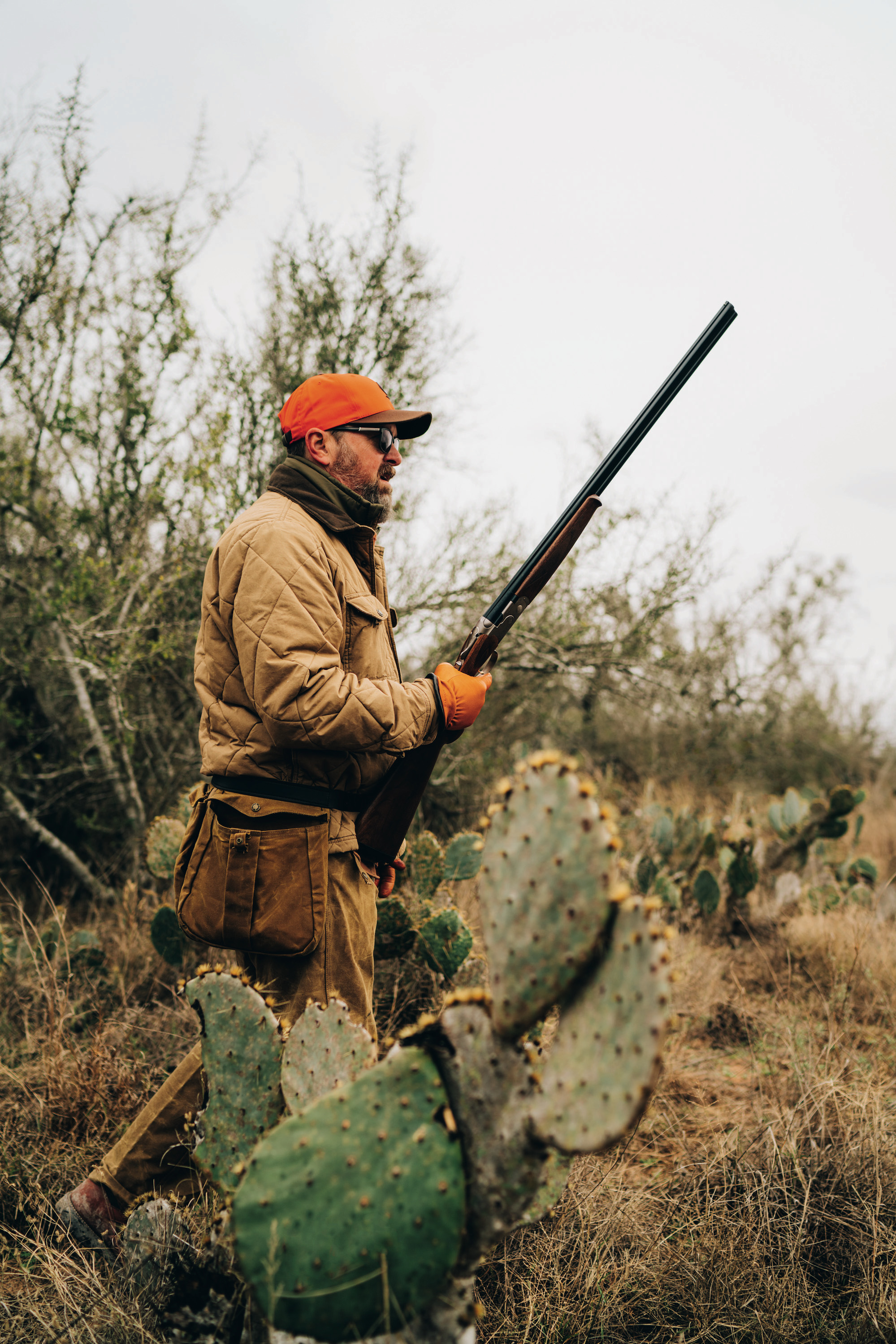
Photo: NICK KELLEY
James Powell, the East Foundation’s director of communications, quail hunting at San Antonio Viejo.
Such pressures on what are called “working landscapes” cut across geography. Along the Gulf and Atlantic coasts, there’s a growing concern about the loss of working waterfronts—how do we maintain waterfronts amenable to commercial fishermen when million-dollar condo projects are taking over marinas and harbors? Across the South, retaining agricultural land in the face of exurban development is also a working landscapes issue—how do we integrate growing populations in regions where tractors and combines use the same country roads as commuters?
Those concerns at the moment seem far removed from the bird, literally, in hand. But quail hunting here is part of an ambitious endeavor in which every square inch of ground serves a larger purpose: Write a more sustainable future for ranching culture across South Texas.
This ranch, the 150,000-acre San Antonio Viejo, is the crown jewel of a collection of six historic South Texas ranches owned by the nonprofit East Foundation. All told, the ranches cover nearly a quarter million acres, scattered from Hebbronville, 150 miles south of San Antonio, to the shores of Laguna Madre. Cattle graze the holdings, but these are working landscapes with a cause. The ranches serve as living laboratories for studying the interactions between cattle, rangelands, and both native and non-native animal and plant species. Each year, dozens of students, academics, and other scientists conduct research on the ranches, monitoring some 625 wildlife species, from quail and charismatic raptors to Texas horned lizards and northern pygmy mice. All the while, cowboys care for Santa Gertrudis and Red Angus cattle, carrying on a centuries-old tradition.
The foundation’s roots are sunk deep into Texas history and lore, with a pedigree of South Texas ranching royalty. In 1915, a second-generation rancher named Tom T. East Sr. married Alice Gertrudis Kleberg, the granddaughter of the founders of the famed King Ranch—a part of which is adjacent to the San Antonio Viejo—and owner of a quarter interest in that cattle empire. The San Antonio Viejo was home to the East family for the next century. East Sr. and Alice East raised three children on the ranch, and after East Sr. died in 1943, Alice lived to be 104 and spent her life there. Her last surviving child was Robert Claude East, who died in 2007. His will established the East Foundation, to which he bequeathed his entire estate.
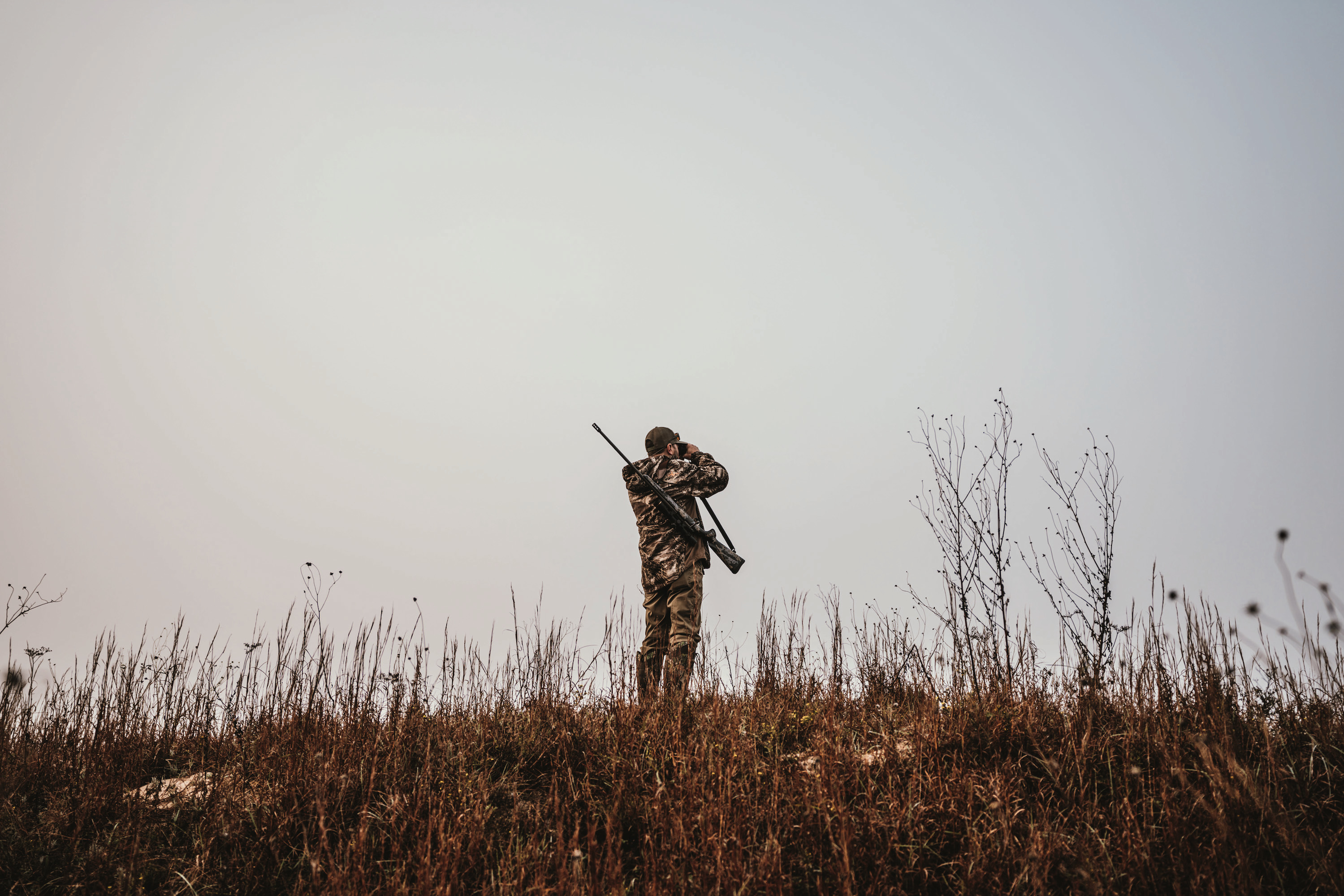
Photo: NICK KELLEY
Powell glassing for nilgai at El Sauz.
Robert East led an intriguing life, to be sure. He never married and never had children. He loved to cowboy, preferred to speak Spanish over English, and by many accounts was barely distinguishable from his ranch hands. At the time of his death, he’d amassed holdings of 280,000 acres but lived simply. “When he died, he owned three shirts, three pairs of pants, and a brush coat,” says Trey Dyer, the East Foundation’s director of land and fixed assets. “That’s not much of an exaggeration. Oh, and one hundred twenty-five million dollars in the bank.”
What he also had was a vision for his land that set into motion the mission of these ranches today. In his trust document, East stipulated that the foundation would never sell the land, and would forever use it for wildlife research and studies into the relationships between conservation and cattle ranching in South Texas. The lands can never be hunted for purely commercial purposes, so all hunting has to be embedded in the foundation’s research.
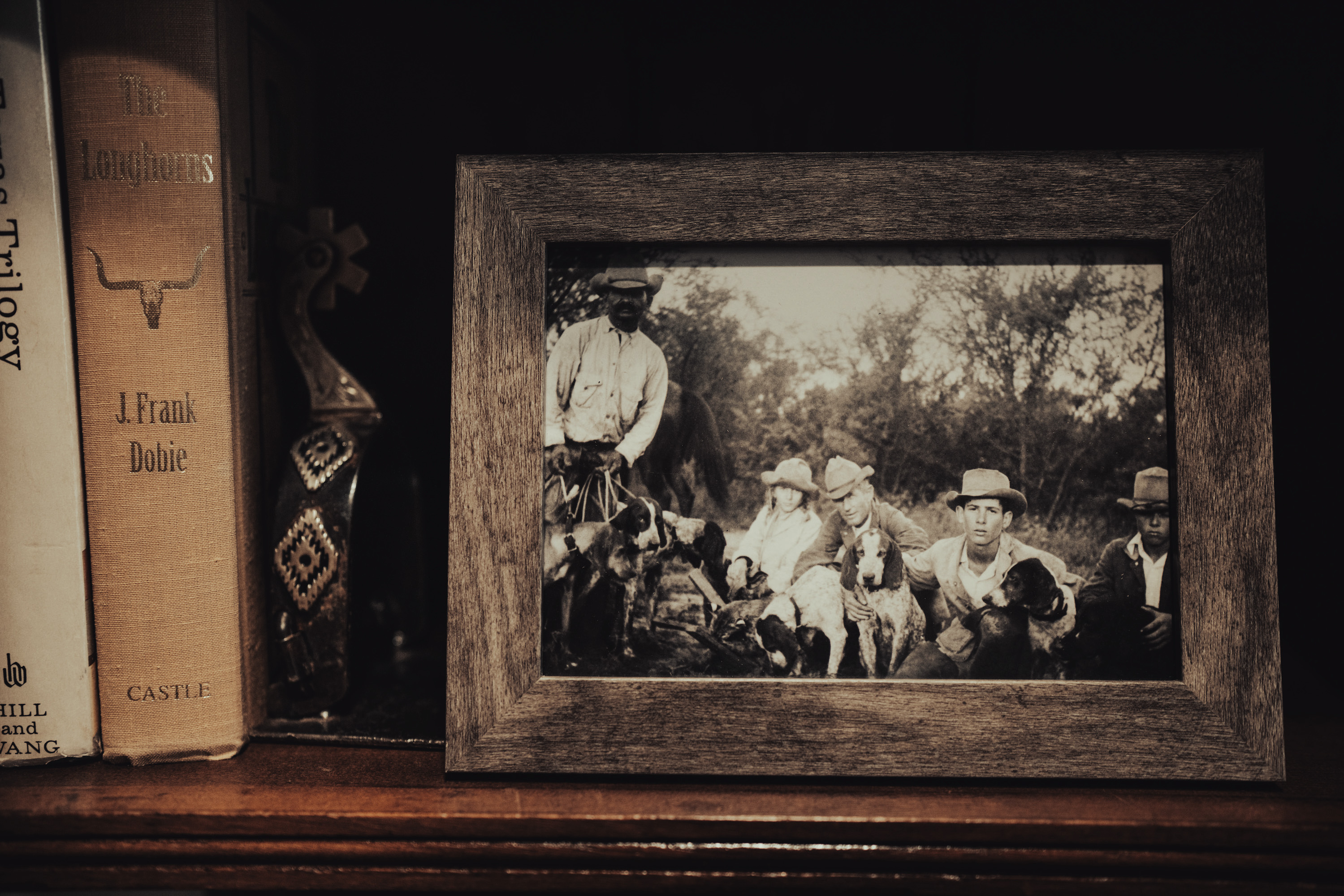
Photo: NICK KELLEY
Tom T. East Sr. with his children in the 1930s
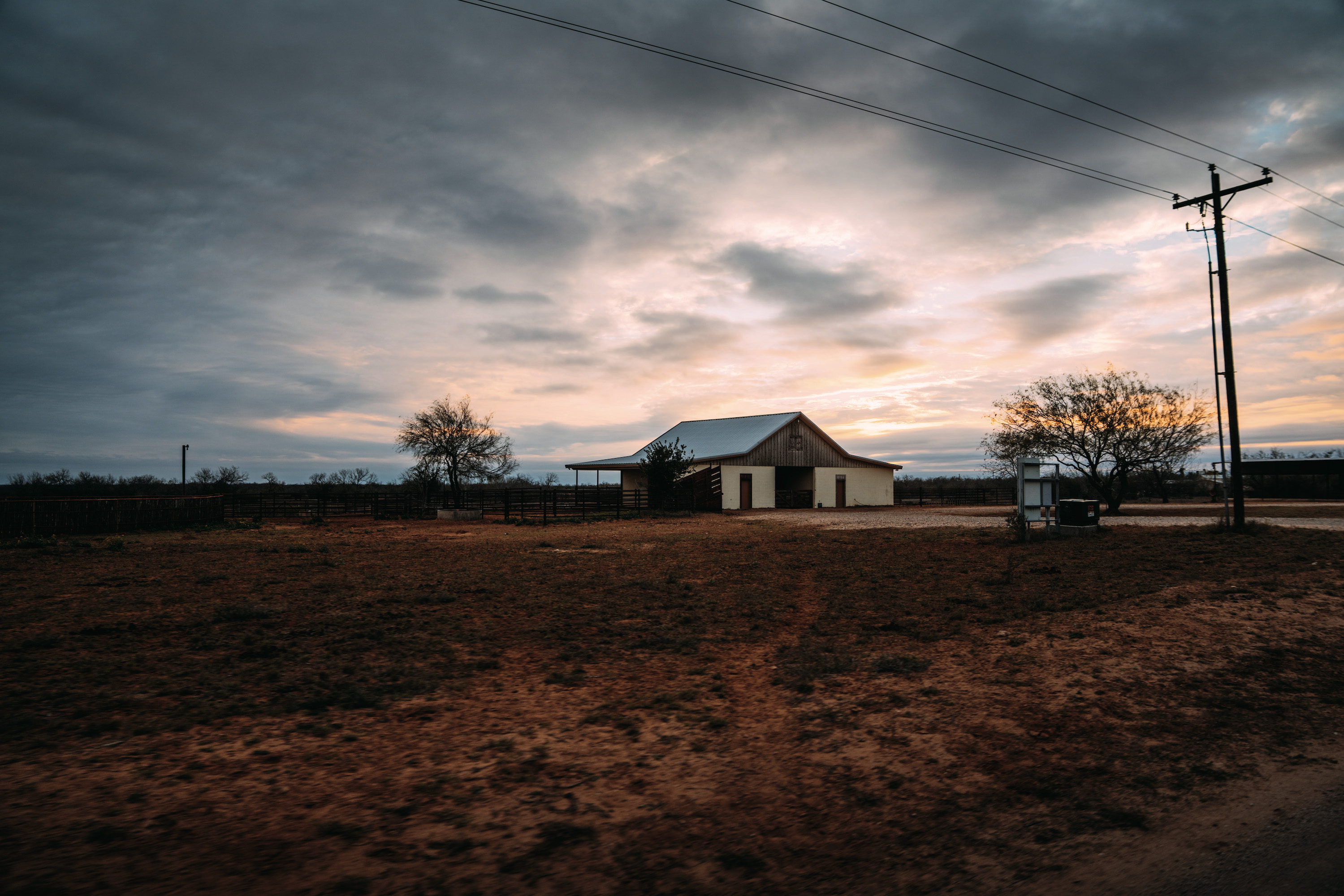
Photo: NICK KELLEY
A horse barn on the ranch.
“Robert East laid out a plan that was very mission focused and forward-thinking,” says Neal Wilkins, the foundation’s president and CEO. “He recognized that we are moving away from the idea that native rangelands have to be evacuated of cattle in order to provide premier wildlife conservation. We want to know how we can mesh forever wildlife conservation and working lands in the same landscape.”
Today the East Foundation employs ranch hands, cowboys, and windmill mechanics, plus PhDs in range and wildlife science, communications specialists, and education outreach staff. At any given time, as many as twenty graduate students and interns pursue research on its ranchlands. Quail-hunting clubs actively participate in the work, and wildlife filmmakers and schoolchildren alike find their way to the ranches.
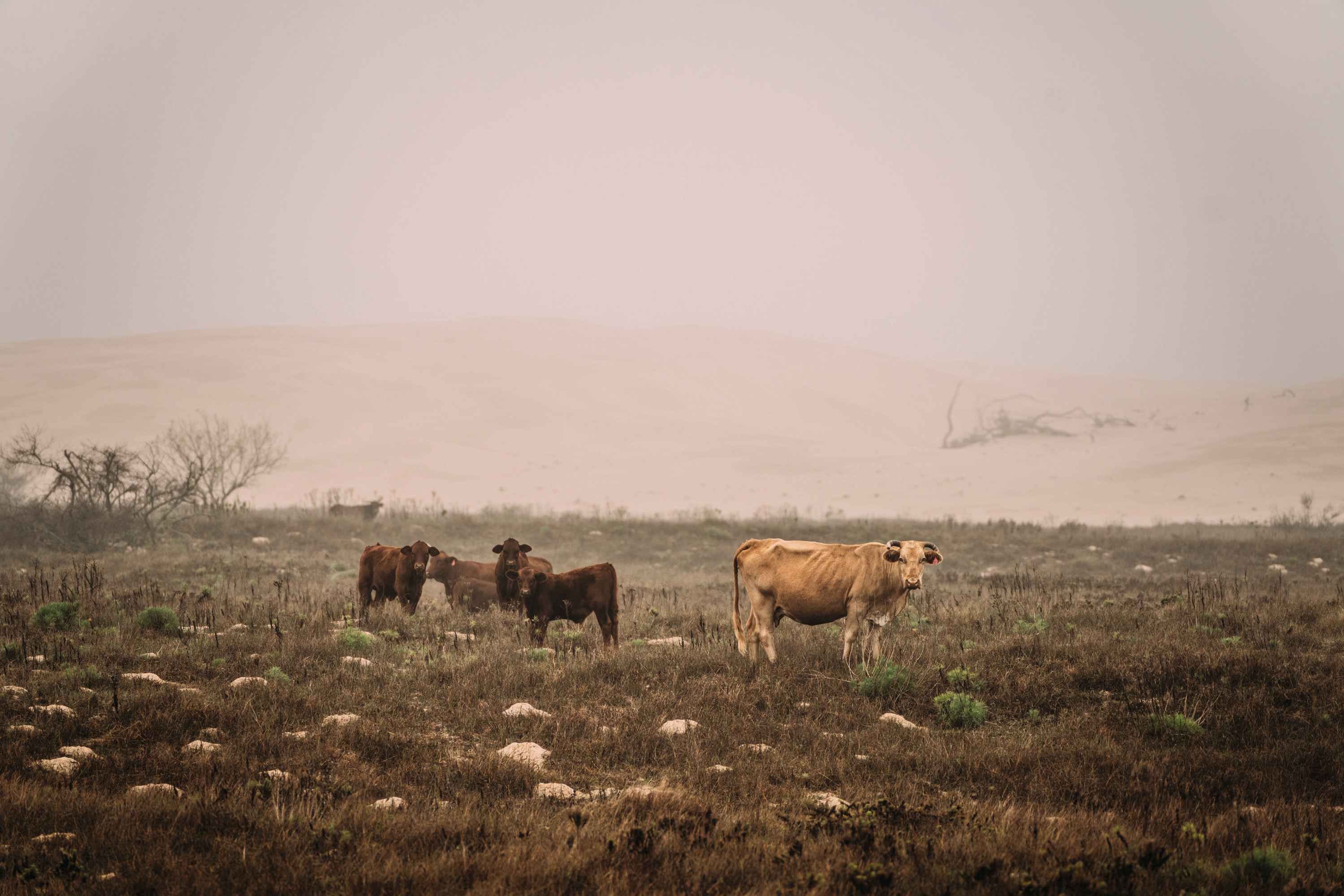
Photo: NICK KELLEY
Cattle at El Sauz.
In some ways, the challenges of marrying the needs of South Texas working lands with conservation and wildlife resemble the puzzle facing other quail regions in the South, with slight changes to specifics. On East Foundation lands, staff must balance the demands of native species (quail, deer, turkey), exotic species (nilgai antelope), and endangered species (ocelots and others), all while providing the forage and water that cattle require. Quail-loving landowners in Florida, Georgia, and the Carolinas try to fit together the interlocking pieces of what it takes to keep bobwhites on their landscapes. They deal with non-native coyotes, rare woodpeckers and tortoises, and range shifts in creatures as diverse and confounding as fire ants and armadillos. And from the South Texas scrublands to the Carolina pinewoods, land managers work to keep fire on the landscape to provide the young, tangled, nutritious growth that quail, deer, and turkeys need—and cattle love. Which means the work at the East Foundation ranches could resonate not only across South Texas, but across all Southern quail country.
Lizzie has a black-rimmed mouth, and I can see her smile fifty yards away. At least it looks like a smile, and the bird dogs seem to be enjoying this as much as I am. Lizzie and another big-running pointer are pushing through the thorns and spines and stickers, flying over the broken caliche, four hunters following, all our focus and hopes out there with the dogs and their noses as they try to break the code of foot scent and feather scent.
It seems an apt metaphor for the East Foundation’s approach to quail hunting, which might be unlike quail hunting anywhere else in the world. Under its research mandate, the ranch’s bird dogs, bobwhites, and hunters must all lead to a harvest of data and knowledge. How do various cattle densities impact the abundance of quail? Do quail respond differently to various grazing methods? How does rainfall impact bobwhite densities?
One primary research question has to do with the impact quail hunters have on bobwhite populations. Quail hunting in Texas is a serious business, and it’s long been held as a truism that 20 percent of a local population could be taken each year without long-term implications to quail numbers. It’s an assumption that has never been fully tested but is now under the microscope here.
Abe Woodard, a range and wildlife scientist for the foundation, lays out the project’s outlines. “Using that recommendation for harvest, what are the effects on bobwhite populations?” he says. “Are we leaving enough for robust reproduction? Are we leaving enough to take into account the variation in rain in South Texas? We need to make sure that our hunting and management practices are done in a sustainable manner and with good stewardship so our quail don’t follow the negative trends we’ve seen in bobwhite populations in other parts of the South.”
Already researchers have found that hunters tend to overstate their skill at connecting with flushing birds, and underestimate how many birds go unretrieved. That data calls into question studies that rely on self-reported harvest figures. But on the East Foundation’s six quail leases, there’s little room for guesswork. The clubs that hunt these lands are about an even split between family-oriented private clubs and corporate groups that use the facilities. Memberships rarely open. “You beg to get in, and then you don’t ever do anything to lose your place,” Woodard says, laughing. And no wonder: Seeing thirty and forty coveys a day isn’t unheard-of.
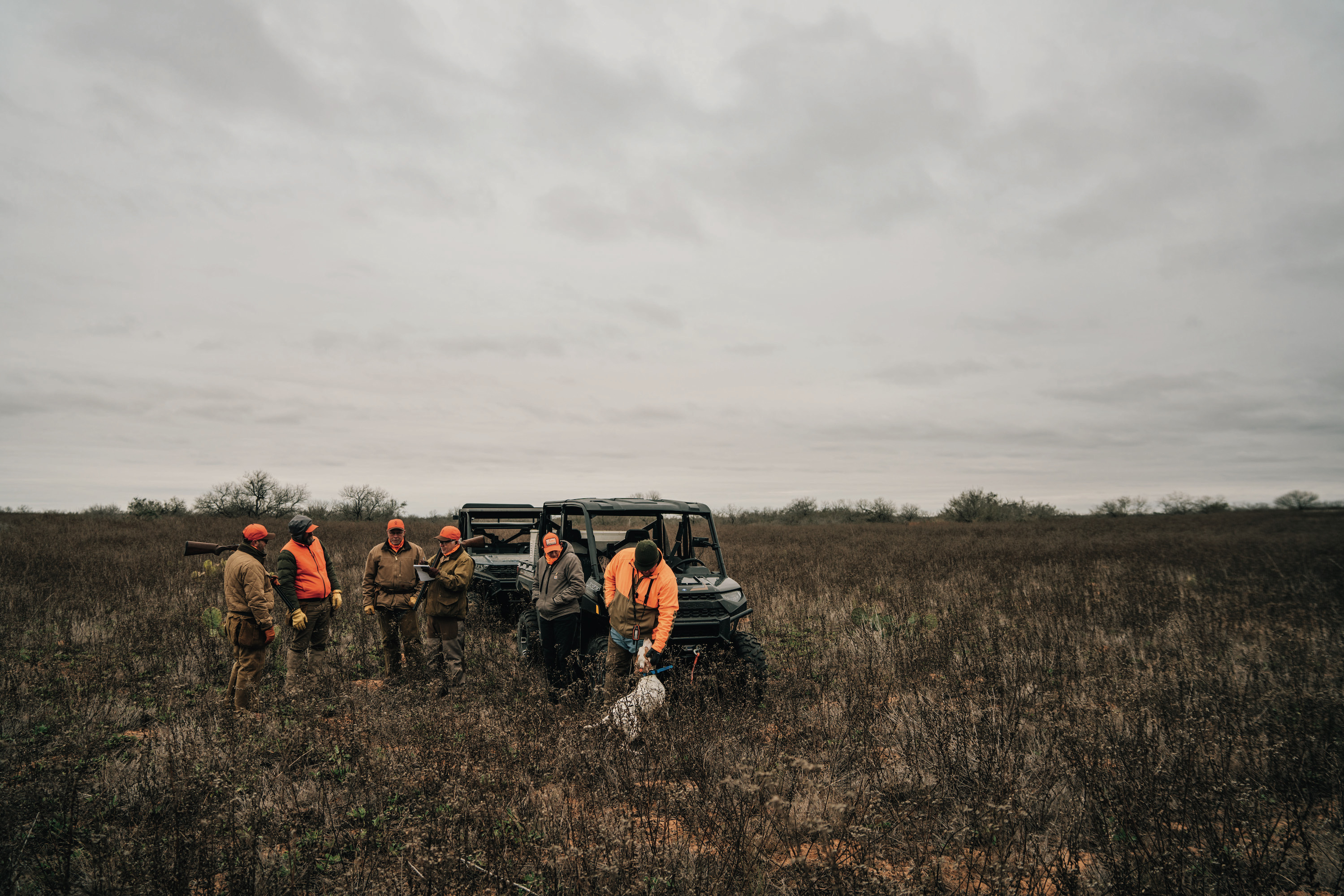
Photo: NICK KELLEY
Heading out for a quail hunt.
Before each hunting season, helicopters fly low over the quail-hunting properties, flushing birds that observers in the choppers then count. “We fly one hundred percent coverage,” Woodard says. “We count every bird.” Then each club is given a specific number of quail it must shoot, equal to 20 percent of each lease’s quail population. In the field, an East Foundation scientist or wildlife technician accompanies each hunt and tallies up the statistics.
Back at the truck, we’re greeted by research scientist Andrea Montalvo, tablet in hand. She logs our details into the quail database—fessing up to every missed shot is a sobering moment—and then weighs my first single.
“One hundred sixty-five grams,” she notes, nodding. Wilkins steps over to take a closer look.
“That’s a record-book bird right there,” he says. “An old-growth quail. Nice work.”
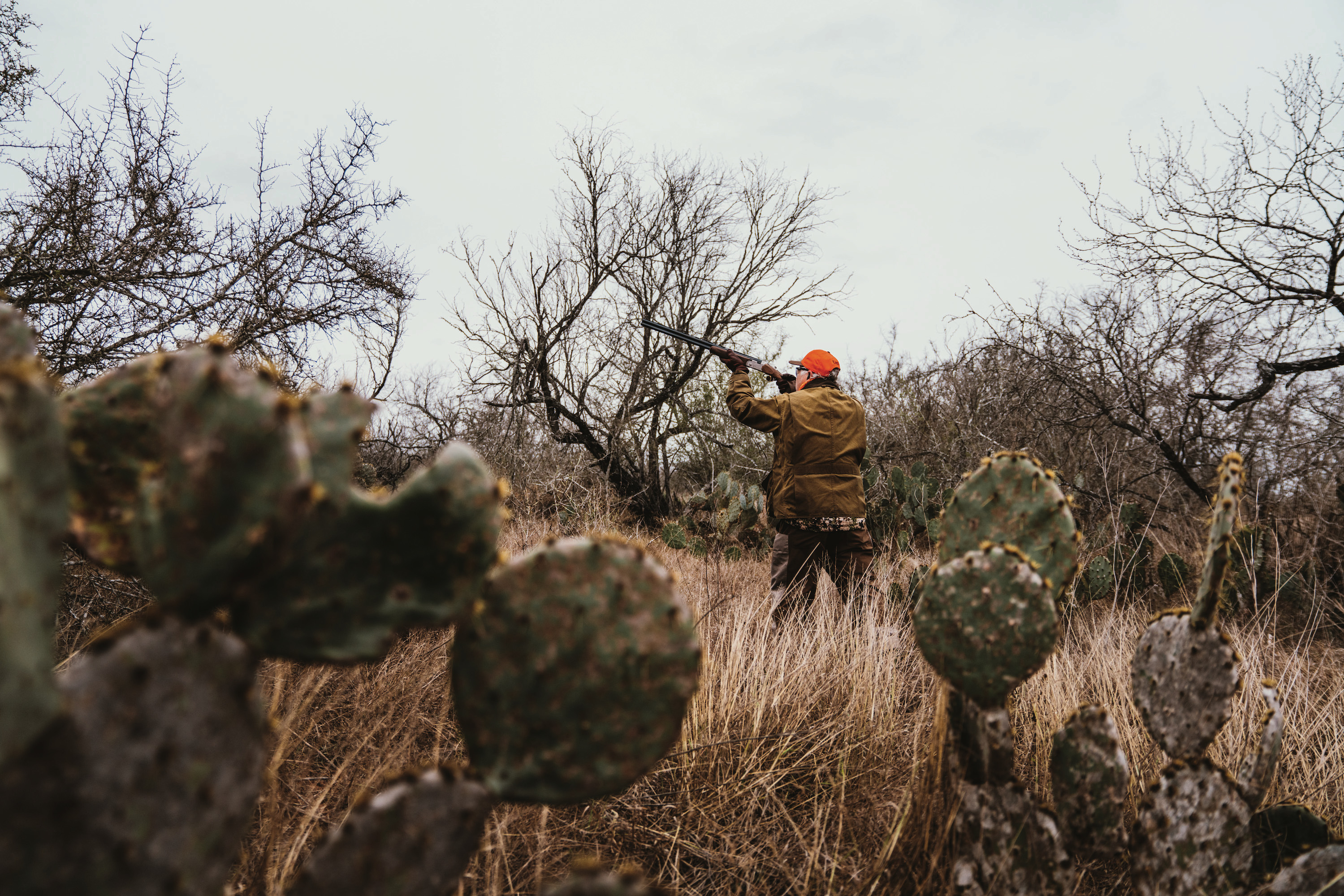
Photo: NICK KELLEY
Taking aim.
Montalvo collects the quail, and we switch out bird dogs for another hunt. I have to admit there’s a different feel to this pursuit. We’re plugging into something larger than chasing birds through the thornscrub. I mention this to Trey Dyer as we push toward a windmill where we’ll rendezvous with the truck. It’s a refreshing approach, he says, to work for an outfit for which knowledge is the critical metric. “There are different drivers here than the bottom line,” he explains. “We’re here to learn and share.” And it’s all built on hunters who invest in the program. For the scientists to get meaningful harvest numbers, the quail hunters here have to be as committed as they are. Most quail hunters are conservative. Some don’t hunt singles after a covey flushes. Many limit the number of birds taken from a single covey rise. But it’s a different deal on these ranches.
“A lot of hunters hunt for six weekends and that’s their season, but that’s not our program,” Woodard says with a grin. “They have to get after it here. We tell them: You need to kill x number of birds, so you better get here with your truck gassed up.”
Beyond the quail studies, with their millions of hunter-supplied data points, the East Foundation ranches are home to what may be the country’s largest unmanaged population of white-tailed deer on private land, and studies on the ranches have investigated the impacts of coyotes on deer fawns and how deer and cattle compete for shade in such a sun-soaked environment. Other research focuses on nilgai antelope. There are more than two thousand of the elk-sized animals on the ranches, and keeping their numbers in check is critical. Nilgai are common hosts to the cattle fever tick, which can wreak havoc on ranch herds.
And at least one East Foundation ranch provides vital habitat for one of the South’s most intriguing endangered species—the American ocelot. It’s thought that fewer than eighty ocelots exist in the United States, but trail cameras have documented more than thirty individuals on the foundation’s El Sauz Ranch near Port Mansfield. The Austin-based cinematographer Ben Masters filmed his 2022 PBS documentary American Ocelot on the property, and he’s back on the ranches to film another wildlife documentary for the BBC.
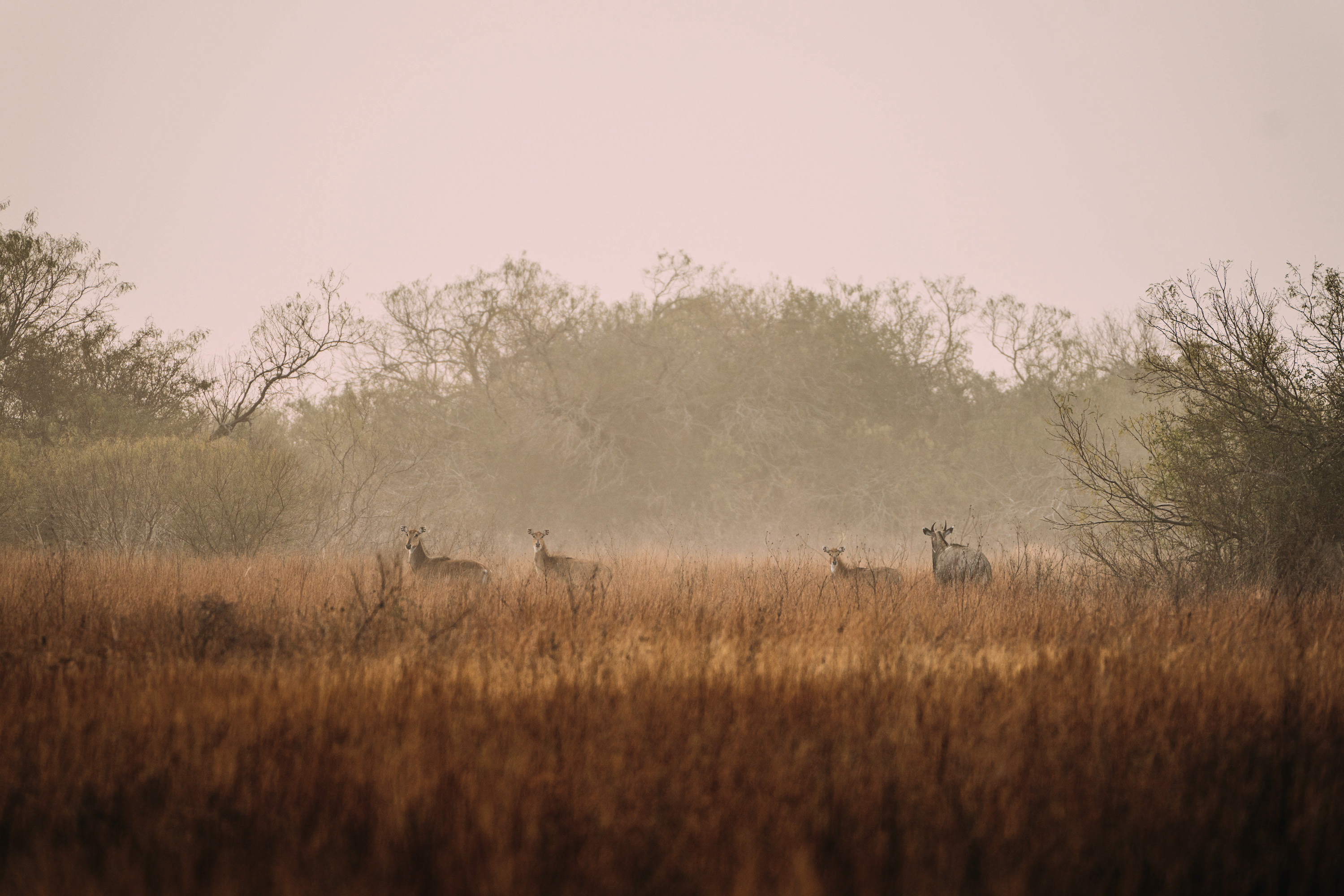
Photo: NICK KELLEY
Nilgai antelope.
One afternoon I meet a veterinarian and doctoral student from the University of Tennessee, deep in the wild 27,000-acre property, which includes three miles of undeveloped shoreline on the Gulf Coast’s Laguna Madre. Off the side of a two-track ranch road, Ashley Reeves straddles a game trail that arrows into the brush, careful to keep her boots off the narrow lane of bare sand pocked with animal tracks. Hackberry thorns snag in her sleeves. “Here’s a good one,” she says, waving me over. “Can you see the toes?”
I thread my way through the thicket and take a knee to look closely. I recognize the print as feline, but that’s as far as I can get. “The difference between an ocelot and bobcat track is subtle,” Reeves says. “The back pad of an ocelot is a little flatter and wider. It’s hard to tell sometimes, but this is an ocelot. It might be Prince. He’s a pretty big cat.”
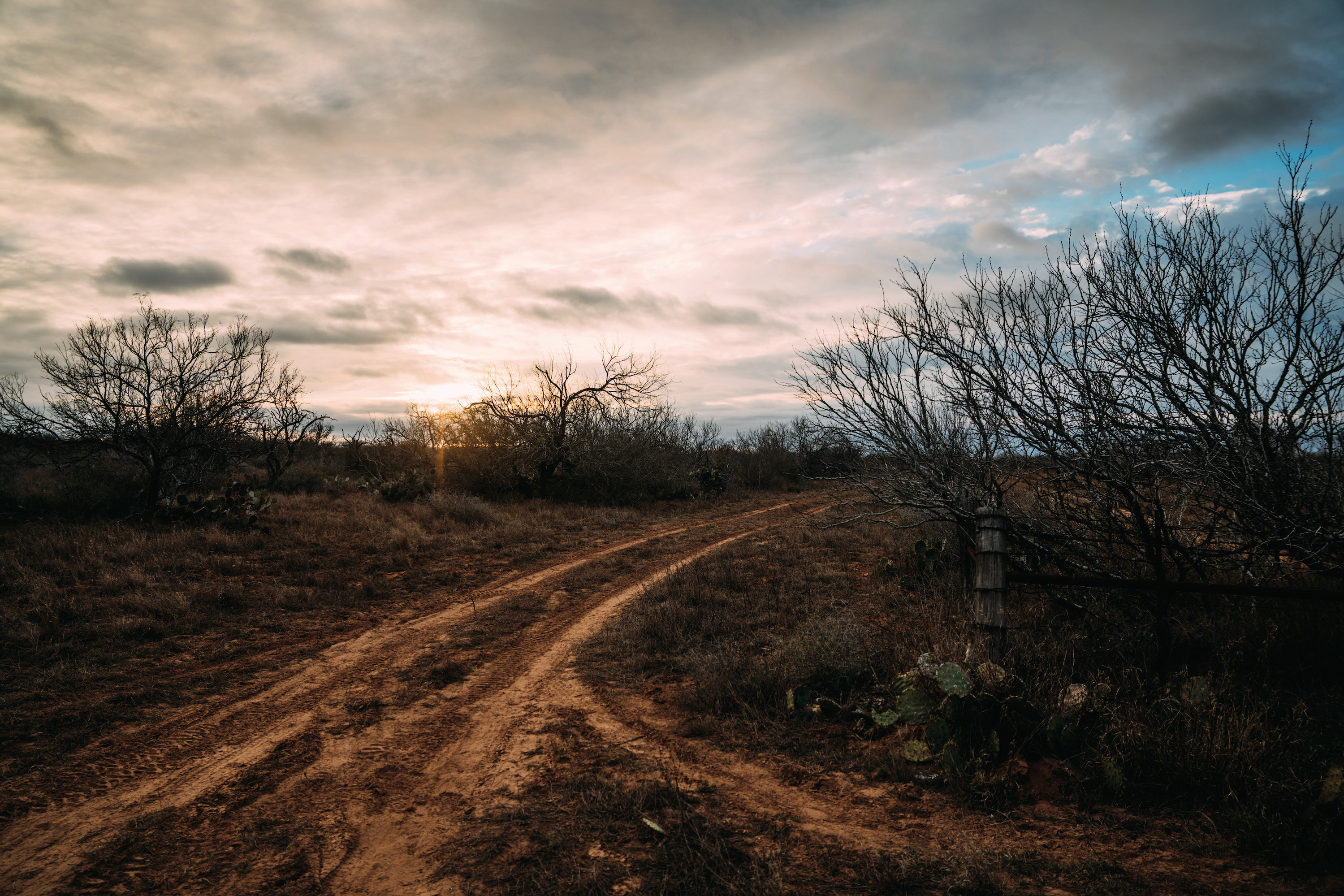
Photo: NICK KELLEY
A dirt road at San Antonio Viejo.
Agricultural development and habitat destruction have marooned these rarely seen predators, cutting them off from larger populations in Mexico. Biologists and students at El Sauz are outfitting captured ocelots with GPS collars to help identify which habitat types could be most suitable for reintroducing animals. But Texas ocelots face a more immediate challenge: a small genetic pool that is getting smaller. While connecting habitat across the border is an important part of protecting these cats, shoring up the genetics of the Texas ocelots is an even more critical step.
At the most fundamental level, that will require more ocelots. Reeves’s study involves capturing wild male ocelots (no small task) and inserting catheters (no mean feat, either) to collect semen, which could form the basis for a network of zoos to create a breeding population. That could support the introduction of an experimental wild ocelot population in South Texas, a significant advance.
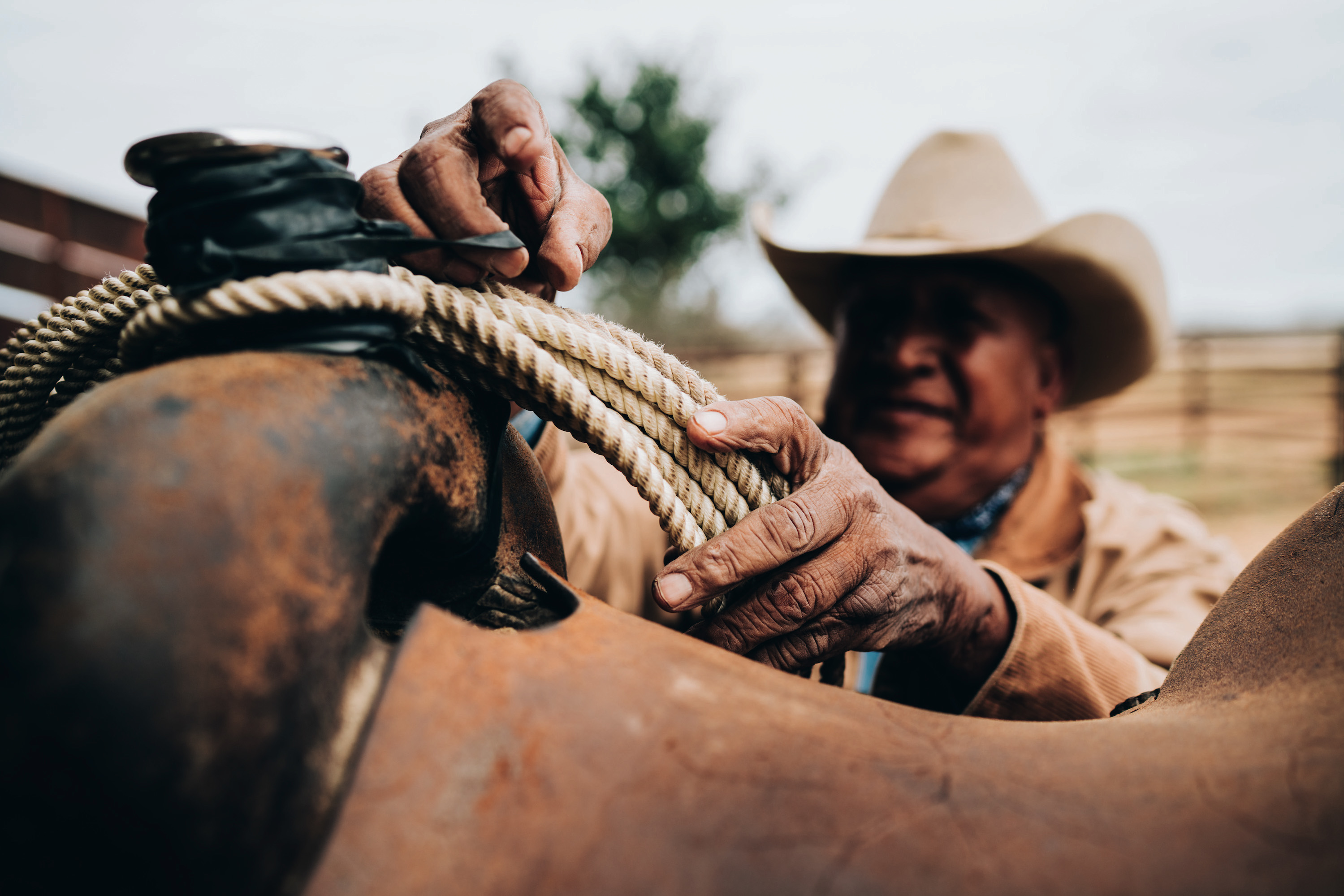
Photo: NICK KELLEY
Vaquero Timo Rodriguez at the ranch.
But it’s slow going. Reeves might have forty or fifty live traps set at any given time. One trap set overnight is considered a single “trap night,” and nearly four thousand trap nights in the 2022 season yielded five captured ocelots—including Prince. When a cat is trapped, alerts go out and foundation staff and research partners stream in. A portable laboratory goes up in the dark. Semen is extracted and frozen using liquid nitrogen. “It’s like something out of M*A*S*H,” Reeves says, grinning. “Three hundred and sixty days of disappointment, and five days of excitement—that’s my job.”
That’s also indicative of the resources the East Foundation brings to range and wildlife science. The ranch operations are designed to incorporate large-scale, long-term research projects, and their status as working ranches lends a kind of trust that isn’t easily duplicated. For many landowners, the prospect of hosting an endangered species is fraught with concern over the potential for regulatory strictures. But the foundation’s pedigree and reputation as a champion for working landscapes are helping calm fears.
“A lot of private landowners are looking to us to find the path toward managing endangered species on large private tracts of land,” says James Powell, the foundation’s director of communications. “Once we figure out the model, that should open up other places where landowners might be hesitant to say they have ocelots. It’s a big experiment with implications far outside South Texas.”
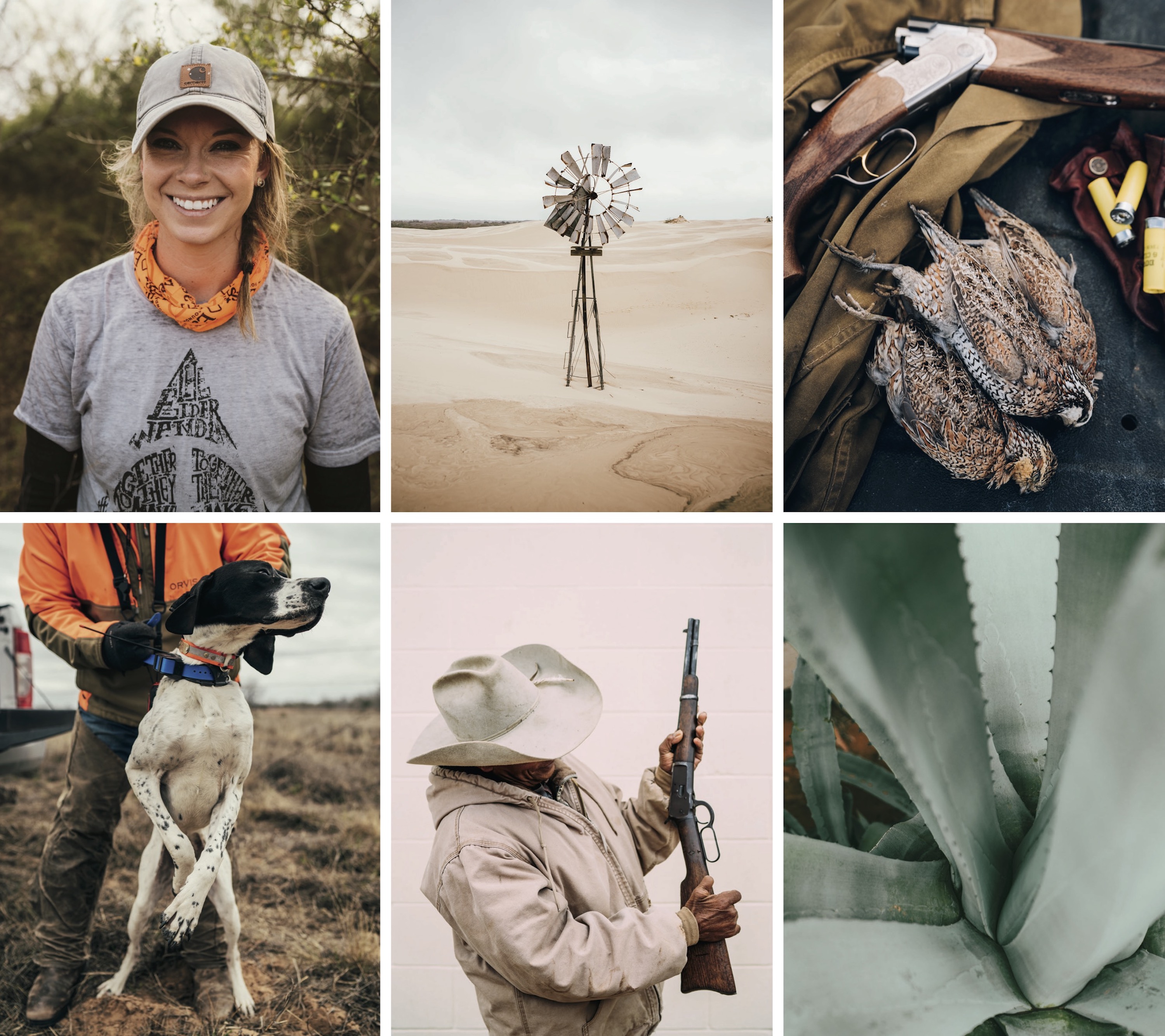
Photo: NICK KELLEY
Clockwise from top left: Ocelot researcher Ashley Reeves; a windmill at El Sauz; a pair of quail; agave leaves; Miguel Rodriguez at San Antonio Viejo; Jack, an English pointer.
It’s a common refrain in matters pertaining to the foundation’s research: The efforts are, pardon the phrase, nearly as big as Texas. Figuring out ways private lands and landowners can help solve issues as crucial as food supply, rangeland quality, and sustainable wildlife populations is central to the foundation’s mission.
“Our federal lands are great,” Wilkins says, “but we’re not going to solve all our problems on federal lands.” And though growing large numbers of quail and big deer while retaining good beef production is important, the revolutionary approach to what the East Foundation is doing, he explains, lies in putting the research into practice with future ranch and wildlife professionals. “We’re going to do it through developing the right management tools on one hand,” he says, “and on the other, training tomorrow’s leaders so they know how to work in a future environment that integrates science, management, policy, and economics.
“If we can’t find ways that land stewardship and wildlife conservation can occur on private lands, all while continuing with beef cattle production, then we are going to lose things that are very dear to us in this state.”



